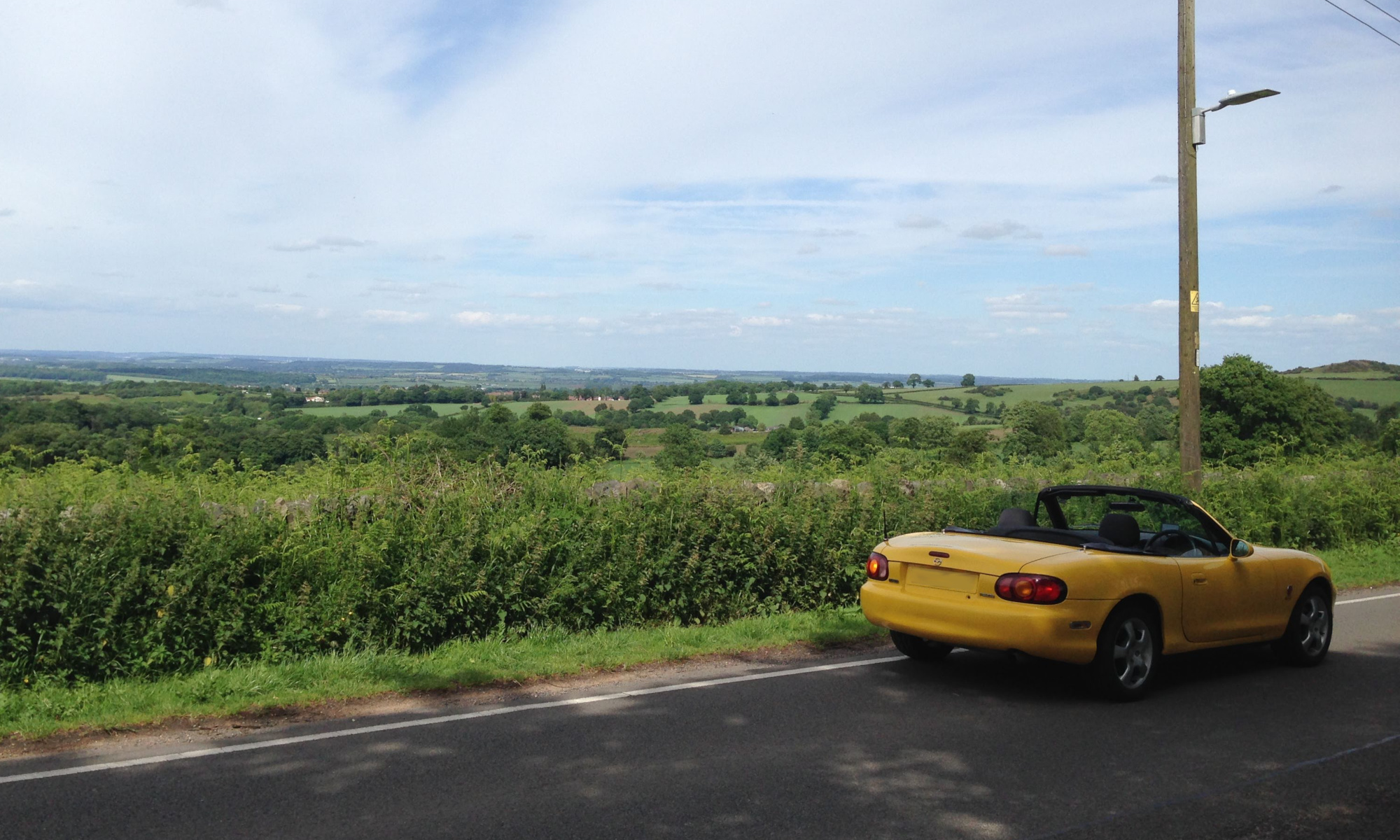Moment Derivatives
Static Directional Stability \( N_\beta = a C_F \; – b C_R \)
Static stability is the tendency of a system to return to its once established equilibrium position when disturbed.
The steer characteristics (oversteer/understeer) can be related to the static stability characteristics.
Consider a car running along a flat straight road with steer angle \( \delta = 0 \) (established trim condition). Suppose after hitting a bump, the vehicle is instantly set to the slip angle \(\beta\) (initial condition). Assume the yaw angle \(r = 0\) and the steer angle \(\delta = 0\) to only consider the effects of the static directional stability \(N_\beta \beta\) moment.

The front and rear slip angles are equal \(\alpha_F = \alpha_R = \beta \) and the same lateral tyre forces are generated. If the car is neutral steer \(N_\beta = a C_F \; – b C_R =0 \), from \(a = b \), the tyre generated moments are balanced. The slip angle \(\beta\) is maintained, and the disturbance of the vehicle slip angle \(\beta\) is not resolved. The car has neutral static stabiltiy characteristics.
For an understeering car \(N_\beta = a C_F \; – b C_R >0 \), assume the cornering stiffness is adjusted to be the same at the front and rear \( C_F = C_R \) and the c.g. is at \(\dfrac{1}{3}l \) to the rear of the front axle. After the disturbance \(\beta\), the static directional stability moment \(N_\beta \beta \) tries to reduce the disturbance in vehicle slip angle \(\beta\). Therefore, the car has stable static stability characteristics.
For an oversteering car \(N_\beta = a C_F \; – b C_R <0 \), the static directional stability moment \(N_\beta \beta \) tries to increase the vehicle slip angle. Therefore the car has unstable charactaristics.
Static Directional Control \( N_\delta = -a C_F >0 \)
Static directional control moment \(N_\delta \delta = (-aC_F)\delta\) arises from steering the front wheels.
Consider a car running along a flat straight road, and a step input of \(\delta_1 \)is made to the steer angle.

The generated control moment \[ N_{control} = Y_F \cos{\delta_1} a \] For a small angle \(\delta_1\) \[ \begin{array}{l} \begin{align} N_{control} &= Y_F a \\ &= C_F \delta_1 a \end{align} \end{array} \] where \( C_F \) is the cornering stiffness of the front tyres.
The direction of the control moment coincides with the direction to which the front tyres are steered.
Yaw Damping \(N_r = \dfrac{1}{V}(a^2C_F + b^2 C_R) <0\)
The yaw damping accounts for the largest source of the stabilizing for a car in a steady turn or disturbance [1]. The reduction in directional stability in high speed is due to the \(\dfrac{1}{V}\) part of the yaw damping \(N_r\).

In steady turning, a centrifugal force exists and the vehicle follows a curved path. If the vehicle is on a curved path, even if \(\delta = \beta = 0\), there are ‘curve-induced’ slip angles at the front and rear tyres.
If the vehicle turns at a constant \(V\) and \(\overline{a_y}\), the constant yaw velocity
\[
r = \dfrac{V}{R} = \dfrac{\overline{a_y}g}{V}
\]
where \(\overline{a_y}\) is lateral acceleration in g \(\overline{a_y} = \dfrac{a_y}{g}\).
The yaw velocity \(r\) produces lateral velocities \(ar\) at the front tyre and \(-br\) at the rear tyre. With the longitudinal foward velocity \(V\), the slip angles \(\alpha_F\) and \(\alpha_R\) arise.
\[
\left\{
\begin{array}{l}
\alpha_F = \arctan(\dfrac{ar}{V}) \approx \dfrac{ar}{V} \\
\alpha_R = \arctan(\dfrac{-br}{V}) \approx \dfrac{-br}{V}
\end{array}
\right.
\]
The yaw damping moment
\[
\begin{array}{l} \begin{align}
N_r r &= C_F\alpha_F a \;- C_R\alpha_R b \\
&= C_F\dfrac{ar}{V}a \; – C_R\dfrac{-br}{V} b \\
&= \dfrac{r}{V}(a^2C_F + b^2 C_R)
\end{align} \end{array}
\]
The yaw damping moment tries to reduce the raw velocity \(r\).
Reference
[1] W. Milliken and D. Milliken, Race Car Vehicle Dynamics.
